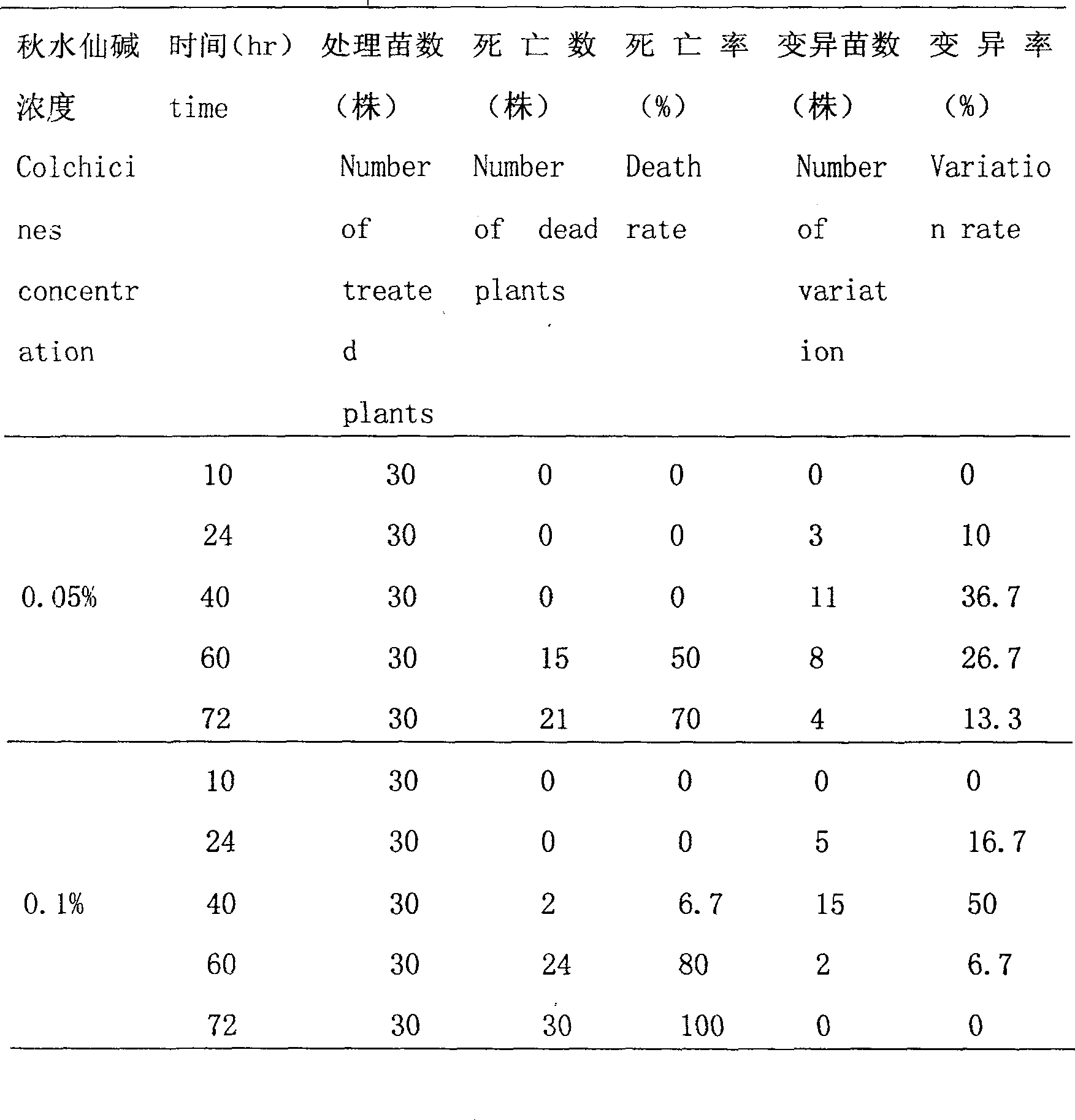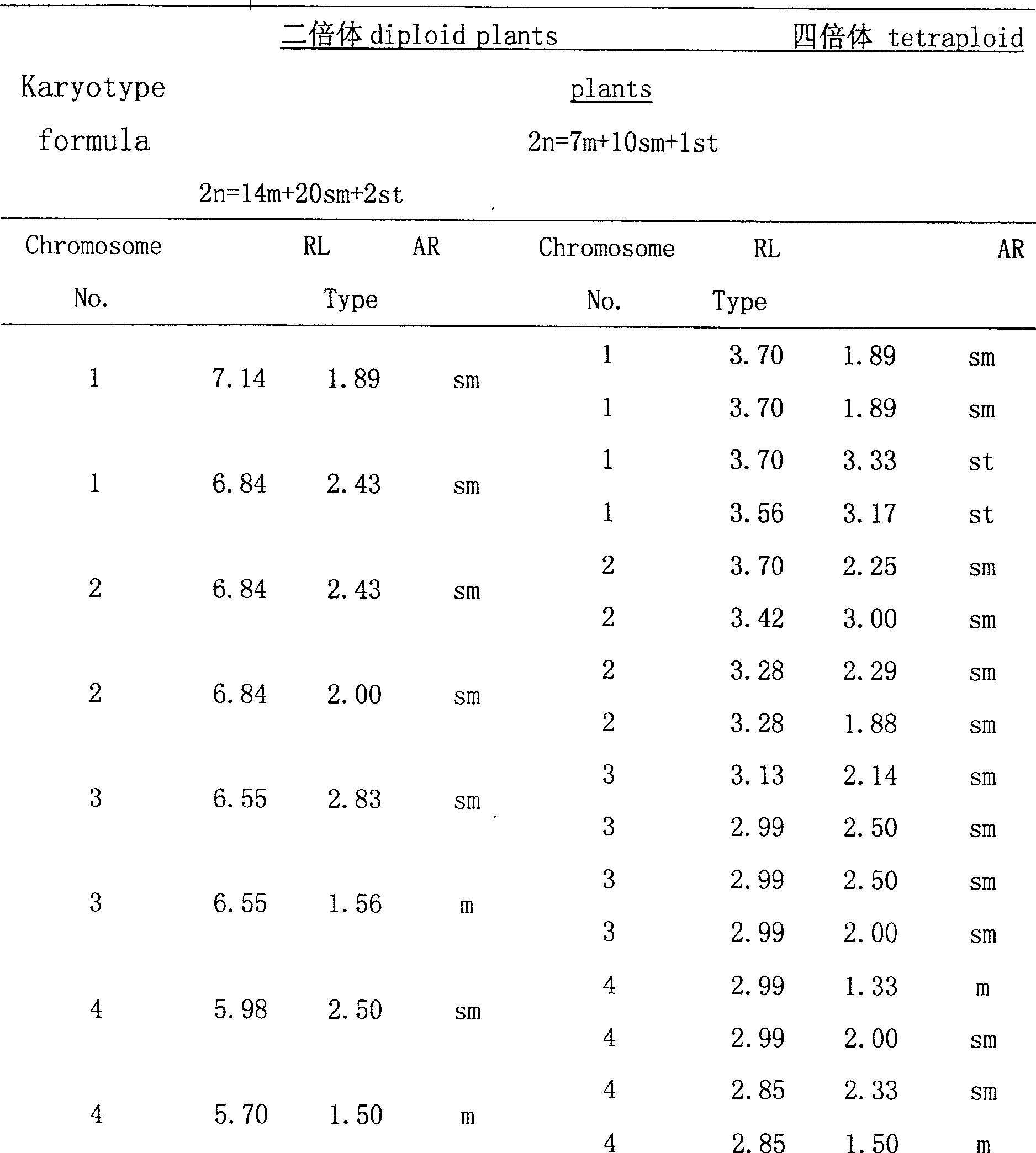Plactycodon grandiflorous tetraploid breeding method
A cultivation method and tetraploid technology, applied in horticultural methods, botanical equipment and methods, plant cells, etc., to achieve the effects of obvious variation, fast growth, and speeding up the breeding process
- Summary
- Abstract
- Description
- Claims
- Application Information
AI Technical Summary
Problems solved by technology
Method used
Image
Examples
Embodiment 1
[0022] 1. Cut the robust young shoots of the domesticated and cultivated wild Platycodon grandiflorum single plant, clean them with tap water, and put in 0.1% mercury chloride (Hgcl 2 ) solution for 20 minutes, then put into 2% sodium hypochlorite solution and soak for 12 minutes, rinse 3 times with sterile water, and inoculate the sterilized cut into the unit under aseptic conditions. In the following induction media in mg / L:
[0023] MS Basic Medium
[0024] 6-Benzylaminopurine (6-BA) 0.1mg / L
[0025] Kinetin (KT) 0.05mg / L
[0026] Naphthaleneacetic acid (NAA) 0.1mg / L
[0027] Sucrose 30000mg / L
[0028] Agar 4500mg / L
[0029] pH 5.5
[0030] Under the environmental conditions of light 12h / d, light intensity 1200Lx, and temperature 25°C, cultivate for 20 days, so that adventitious buds can be directly formed from the incision;
[0031] 2. Cut the resulting adventitious bud clusters into the following medium:
[0032] MS Basic Medium
[0033] 6-Benzylaminopurine (6-BA...
Embodiment 2
[0050]1. Cut off the strong young shoots of Platycodon grandiflorum single plant, clean them with tap water, and put in 0.2% mercury chloride (Hgcl 2 ) solution for 10 minutes, then put into a 1% sodium hypochlorite solution and soak for 15 minutes, rinse twice with sterile water, and inoculate the sterilized cut into the unit under aseptic conditions. In the following induction media in mg / L:
[0051] MS Basic Medium
[0052] 6-Benzylaminopurine (6-BA) 0.3mg / L
[0053] Kinetin (KT) 0.1mg / L
[0054] Naphthaleneacetic acid (NAA) 0.3mg / L
[0055] Sucrose 30000mg / L
[0056] Agar 4500mg / L
[0057] pH 5.8
[0058] Under the environmental conditions of light 10h / d, light intensity 800Lx, and temperature 22°C, cultivate for 30 days, so that adventitious buds can be directly formed from the incision;
[0059] 2. Cut the resulting adventitious bud clusters into the following medium:
[0060] MS Basic Medium
[0061] 6-Benzylaminopurine (6-BA) 0.3mg / L
[0062] Kinetin (KT) 0.1...
PUM
 Login to View More
Login to View More Abstract
Description
Claims
Application Information
 Login to View More
Login to View More - R&D
- Intellectual Property
- Life Sciences
- Materials
- Tech Scout
- Unparalleled Data Quality
- Higher Quality Content
- 60% Fewer Hallucinations
Browse by: Latest US Patents, China's latest patents, Technical Efficacy Thesaurus, Application Domain, Technology Topic, Popular Technical Reports.
© 2025 PatSnap. All rights reserved.Legal|Privacy policy|Modern Slavery Act Transparency Statement|Sitemap|About US| Contact US: help@patsnap.com



